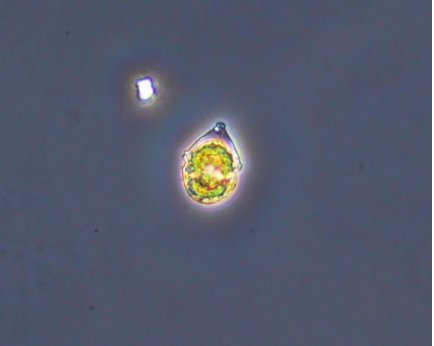Phytoplankton samples were collected on September 3, 2025 at Bullock’s Reach and analyzed in the laboratory shortly after collection.
It was sunny, calm and warm on this day. The water temperature was 21.83 °C, the salinity was 30.37 psu, and the chlorophyll a was 4.82 ug/L.
The qualitative tow net sample had a moderate filtration time. The filtrate was dark brown and cloudy with sediment.
The analysis of the quantitative whole water sample revealed a total of 1,096,000 cells/L. The microflagellates were found at 560,000 cells/L. The most predominant phytoplankton genera were Leptocylindrus spp. at 177,000 cells/L, Skeletonema spp. at 107,000 cells/L, and Chaetoceros spp. at 83,000 cells/L.

Scrippsiella spp. is a genus of pear-shaped, cosmopolitan dinoflagellates found in coastal temperate waters. They are able to form harmful algal blooms that lead to water discoloration. They are also efficient cyst producers, which act as a benthic reservoir of the vegetative population and contribute to the dinoflagellate’s success in a neritic environment.
